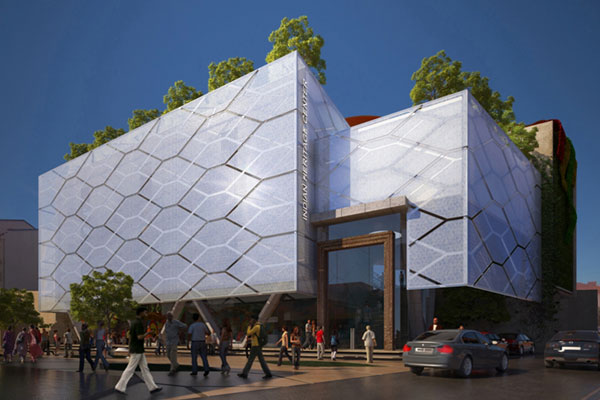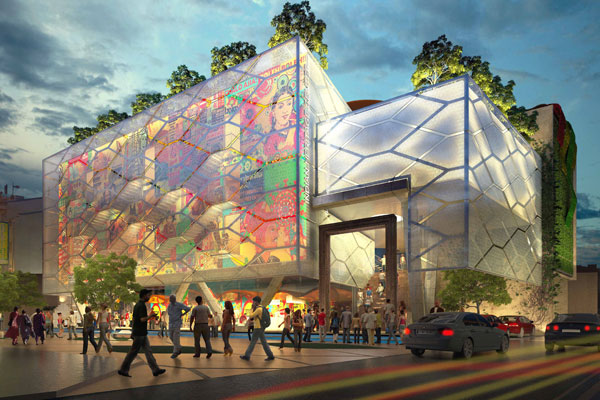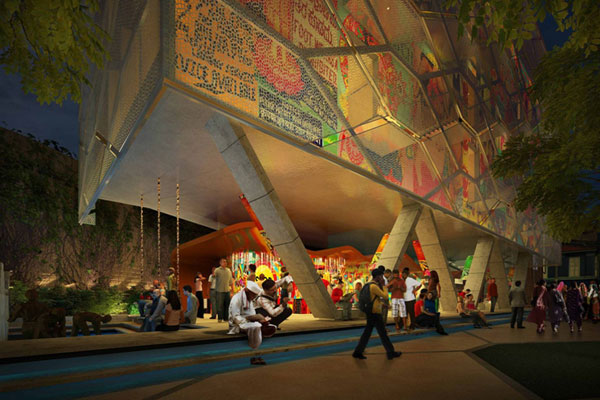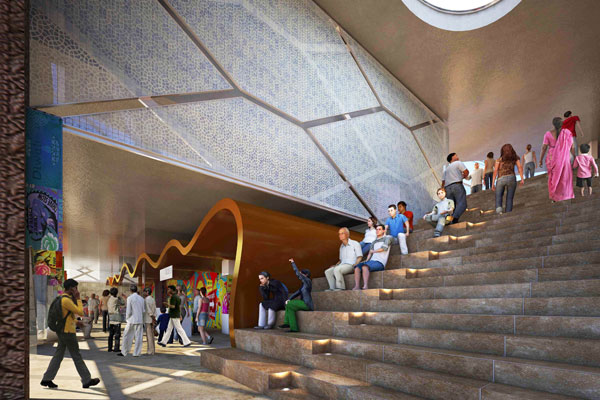Sustainability, human-centredness and appropriate context are factors that guide the work of URBNarc and its Design Director Gaurang Khemka, writes Iliyas Ong.

July 2nd, 2014
In his architecture and interior design work, Gaurang Khemka never loses sight of whom he is designing for: people. The Design Director of Singaporean firm URBNarc believes that his projects, which span across hospitality, commercial, residential and institutional spaces, must be calibrated to achieve the rather Roarkian goal of “lifting the human spirit”.
 Indian Heritage Centre, Singapore
Indian Heritage Centre, Singapore
The 41-year-old founded URBNarc in 2009 to develop design solutions that fit into the site’s environmental, social and economic contexts. “We do this by applying a contemporary idiom, as we believe danger lies in pretense to tradition,” says Khemka, who considers himself an “architect, urbanist and designer without conforming to established prototypes”.

Indian Heritage Centre, Singapore
Together with Robert Greg Shand Architects, URBNarc worked on the new Indian Heritage Centre that is currently being built in Singapore’s Little India district. The $12 million, four-storey cultural and community centre, which will house galleries, museum facilities and other amenities, bears a striking facade that changes depending on lighting conditions. During the day, the facade will reflect sunlight and take on an iridescence; at night, backlights reveal a vibrant and colourful mural depicting elements of Indian culture.

Indian Heritage Centre, Singapore
Khemka explains that to design the Indian Heritage Centre to be both modern and respectful of tradition – or what he calls a “holistic solution” – an inherent understanding of Indian culture and the community in Singapore was required.

Indian Heritage Centre, Singapore
To arrive at such solutions, he embarks on a rigorous series of primary and secondary research. “The history, context, market, local materials, future trends, demographic patterns and projections are all researched along with the client and consultant team,” he reveals, adding that the “opportunities and constraints” of the physical site, including climatic factors, soil conditions and riparian corridors, are also factored into the process.
Another built project that highlights URBNarc’s humanistic and context-specific approach is the 240-room Alila Seminyak beach resort in Bali, slated for opening in 2015. The practice was commissioned as masterplanners, architects and interior designers to create a retreat for young and trendy tourists without compromising its Balinese identity.
But as the hotel is located on a busy urban stretch of the island, Khemka’s solution was to design a “secret paradise”. Traditional Balinese art and design flourishes complement “metaphors” of the fauna native to the region, while landscaped spaces and balconies open up views of the ocean that guests can enjoy at all times.
Furthermore, local flora and fauna were attracted to the resort by way of planting fruit- and flower-bearing trees, cleaning neighbouring streams, and setting up vertical and roof gardens. “The hotel is designed to be a living organism set within its environment, where all public spaces are non-air-conditioned,” Khemka says.
Khemka’s approach to the Indian Heritage Centre and Alila Seminyak also hint at his interest in the liveability of cities. Selected as a Global Young Leader at the recent World Cities Summit, the trained architect suggests that city planners engage boutique architecture firms such as his to enhance a city’s urban fabric.
“Street furniture, leftover spaces, sidewalks and public squares all need creative intervention that can’t necessarily be driven by [city planners] at all times, as the city matures,” he argues.
For example, Khemka wants urban authorities to consider out-of-the-box ideas of strategically co-locating programmes. “Old age homes could be co-located near childcare centres,” he says. “The elderly could then have easy employment opportunities and look after children – it’s a natural synergy. This can also have the added advantage of mixing different income groups in a gentler format that can help create a more inclusive society.”
URBNarc
urbnarc.com
INDESIGN is on instagram
Follow @indesignlive
A searchable and comprehensive guide for specifying leading products and their suppliers
Keep up to date with the latest and greatest from our industry BFF's!

Sydney’s newest design concept store, HOW WE LIVE, explores the overlap between home and workplace – with a Surry Hills pop-up from Friday 28th November.

For those who appreciate form as much as function, Gaggenau’s latest induction innovation delivers sculpted precision and effortless flexibility, disappearing seamlessly into the surface when not in use.

Merging two hotel identities in one landmark development, Hotel Indigo and Holiday Inn Little Collins capture the spirit of Melbourne through Buchan’s narrative-driven design – elevated by GROHE’s signature craftsmanship.
The internet never sleeps! Here's the stuff you might have missed

The Parliamentary Friends reconvened at Parliament House, uniting political and professional leaders to champion architecture and design.